Khmer people mainly eat dry and grilled dishes, but the number one delicacy of Angkor is the water dish Num Ban Chok.
In Khmer, "Num" means cake; "Ban Chok" means to feed. Some people say Ban Chok is handmade noodles, made from perforated cans. In Vietnam, many places sell Num Ban Chok but it is not like in Cambodia. The taste and deliciousness cannot be compared. The ingredients are similar but the way of making is different.
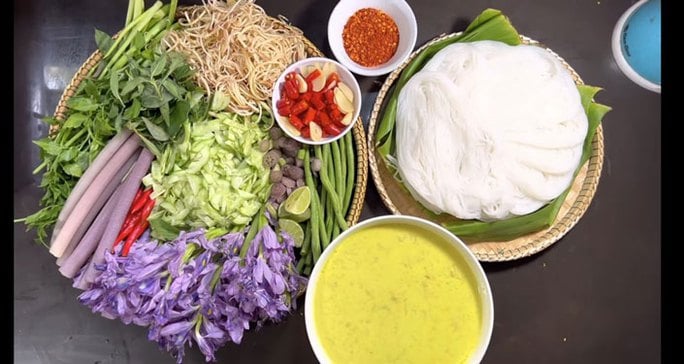
Num Ban Chok tray for many people
With Cambodian Num Ban Chok, the fish is pounded into a broth, not left whole. The raw vegetables are also different. At first glance, only the vegetables are attractive, the broth is a bit monotonous, but when you eat it, you will be surprised.
Vermicelli is made from rice, newly harvested Rumduol rice, which has won first prize many times in the World 's Best Rice contest. The rice is soaked in clean well water, ground into flour, and pressed into vermicelli. In the past, it was made by hand. The dough was poured into a can with holes punched in it. A wooden pin, like a piston, was used to push the dough out of the holes into hot water, forming vermicelli. It was hard work, but several times more delicious than the machine-made vermicelli today.
Making broth requires concentration and precision. From the selection of ingredients, the weight and quality of each dish to the processing…, every step is important. If one step is flawed, the noodles will have problems immediately. The main ingredient is wild, live snakehead fish. The best type of fish is about 0.7 - 1 kg. Next is grade 1 prohoc fish sauce and other spices such as lemongrass, turmeric, coconut milk, and mugwort.
Clean well water is best, boil, add prohoc fish sauce for about 5 minutes, put in cleaned fish. When the fish is cooked, take it out, remove the bones and skin; put it in a mortar, pound it into powder. Cook again for about 15 minutes on low heat with turmeric, lemongrass, mugwort, coconut milk. The cook looks at the color of the water, smells the aroma enough, then turns off the heat.
A delicious Num Ban Chok must have a complete set of raw vegetables including cucumber, long beans, water lilies, okra, and shredded cabbage; add water mimosa flowers, water hyacinth flowers, bean sprouts, banana flowers, and various types of wild leaves. Do not use onions. Lemon, green chili, chili powder, and garlic can be added when eating, depending on the taste of the user.
Put the noodles in a bowl, add vegetables, pour in the broth, it doesn't need to be hot to be delicious. Num Ban Chok has a sweet, slightly fatty, mildly aromatic taste... Strangely, the fish broth has prohoc fish sauce but is not fishy at all. The secret lies in the wormwood root - a Khmer culinary treasure. The wormwood root is a popular spice in Khmer-origin noodle dishes such as noodle soup, fish noodle, and fish noodle because it removes the fishy smell, creates a unique flavor; helps fight bacteria, reduce inflammation, relieve pain, reduce fever...
Nowadays, there is also Num Ban Chok with chicken curry broth, which is for Europeans but not delicious. To eat Num Ban Chok, you have to go to Siem Reap. The ancient capital of Angkor has a different climate and soil, so the ingredients, spices, and well water are different; the chef puts all his heart and soul into the dish, making it delicious and soulful.
Enjoying Num Ban Chok cannot be rushed. You must leisurely admire the color of the broth and the vegetables; slowly inhale the aroma; slowly put the noodles, broth, and vegetables into the bowl. Slowly put it in your mouth; attentively listen to the chewing sound and feel the Khmer flavor spread on the tip of your tongue, to your brain and your whole body, then you can fully appreciate and understand why Num Ban Chok is the number 1 delicious dish of the mysterious land of Angkor.
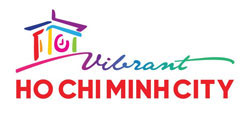




Source



![[Photo] Solemn opening of the 8th Congress of the Central Public Security Party Committee, term 2025-2030](https://vphoto.vietnam.vn/thumb/1200x675/vietnam/resource/IMAGE/2025/10/4/f3b00fb779f44979809441a4dac5c7df)


![[Photo] Bustling Mid-Autumn Festival at the Museum of Ethnology](https://vphoto.vietnam.vn/thumb/1200x675/vietnam/resource/IMAGE/2025/10/4/da8d5927734d4ca58e3eced14bc435a3)
![[Photo] General Secretary To Lam attends the 8th Congress of the Central Public Security Party Committee](https://vphoto.vietnam.vn/thumb/1200x675/vietnam/resource/IMAGE/2025/10/4/79fadf490f674dc483794f2d955f6045)
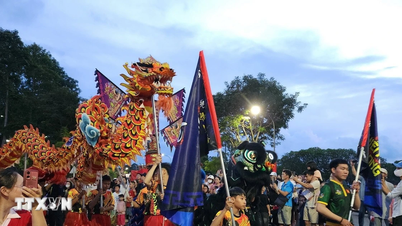





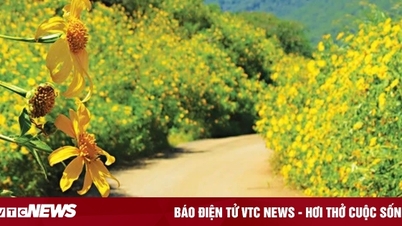

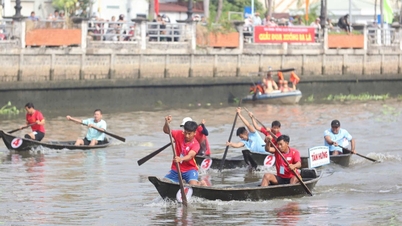










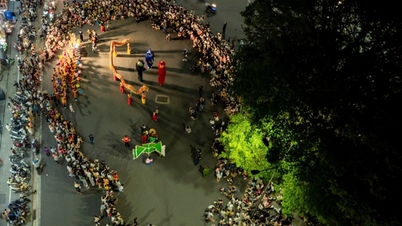

























![[VIDEO] Summary of Petrovietnam's 50th Anniversary Ceremony](https://vphoto.vietnam.vn/thumb/402x226/vietnam/resource/IMAGE/2025/10/4/abe133bdb8114793a16d4fe3e5bd0f12)

![[VIDEO] GENERAL SECRETARY TO LAM AWARDS PETROVIETNAM 8 GOLDEN WORDS: "PIONEER - EXCELLENT - SUSTAINABLE - GLOBAL"](https://vphoto.vietnam.vn/thumb/402x226/vietnam/resource/IMAGE/2025/7/23/c2fdb48863e846cfa9fb8e6ea9cf44e7)



















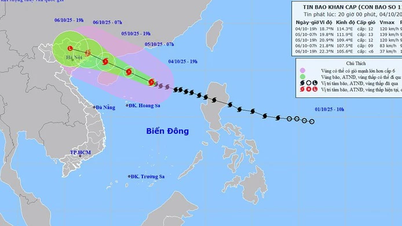

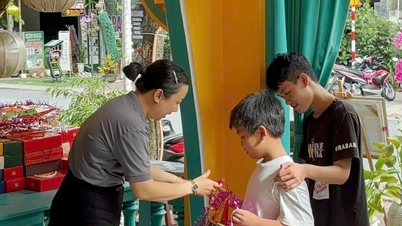



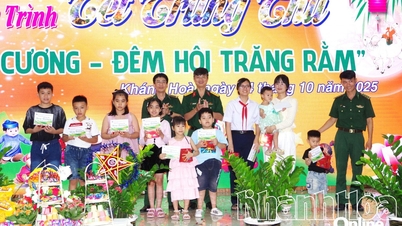








Comment (0)